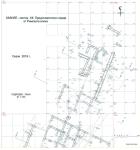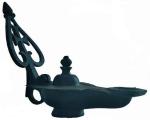Summary (English)
KABYLE (Stefan Bakardzhiev – st_bakarjiev@abv.bg) The northern part of Building F was excavated. Only different segments of the walls were preserved, built of roughly-cut stones bonded with mortar and 55 – 60 cm wide. Building F probably had a П-like layout. A pavement of fragmentary building ceramics bonded with mortar was dismantled in the room that measured 6.50 m by 26 m, situated in the northwestern corner of the atrium. Four square foundations, 65 cm by 65 cm in size, were discovered beneath the pavement. The foundations supported square pillars built of bricks, 50 cm by 50 cm in size, which belonged to an earlier portico from the southeastern side of the central wing of the building. After the portico was dismantled, a covered gallery was built in its place, opened to the southeast towards the atrium. The gallery had a stylobate built of bricks, which supported square pillars constructed of bricks, 1 m by 1 m in size and situated at c. 4 m apart. The finds included coins of Licinius and Constantine the Great, minted in AD 318 – 320 in Siscia, indicating that the gallery was built during the AD 320s. The room in Square XLIII/48 continued to be occupied during the 5th – 6th centuries AD and a bronze lamp was discovered inside. A cardo, 6 m wide, was explored between Building A and Building F. The street was paved with small roughly-cut stones, fragmentary building ceramics and sherds. Three silver antoniani of Aurelian were discovered over the street, while an antonianus of Philip the Arab and a fragment from an inscription from the reign of Elagabalus were discovered within the street pavement, indicating that it was constructed in the mid 3rd century AD. A decumanus, 6 m wide, was explored between Building D and Building F.
- Stefan Bakardzhiev - Museum of History - Yambol
Director
- Stefan Bakardzhiev - Museum of History - Yambol
Team
Research Body
- Museum of History - Yambol






![Download [PDF]](/excavation/skins/fasti/images/results/download_sml.png)
